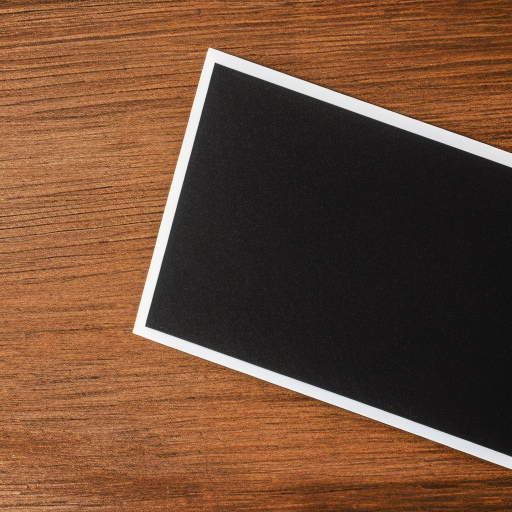How I implemented a price card component in react

Building price card components is important because they allow businesses to present pricing information to their customers in a clear and organized manner, which can improve the customer experience and ultimately lead to increased sales. Price cards can also help businesses to highlight the features and benefits of their products or services, differentiate themselves from competitors, and create a sense of transparency and trust with customers. Additionally, price card components can be used to test and optimize pricing strategies, allowing businesses to find the sweet spot between profitability and customer demand.
Here is an example of a React component for a pricing card with an image on top, below the image the price per day, the host in bold with the host name, and a line below for pricing details:
import React from 'react';
const PricingCard = ({image, price, host, hostName, details}) => {
return (
<div className="pricing-card">
<img src={image} alt="Product" />
<div className="price">{price} per day</div>
<div className="host">
<span className="bold">{host}</span> {hostName}
</div>
<div className="details">{details}</div>
</div>
);
};
export default PricingCard;This component accepts props for the image source, price per day, host name, and pricing details. The host prop is passed as a string and is displayed in bold using the span element with the bold class. The other props are displayed as regular text. Styling for the component can be added to a CSS file or within the component itself using inline styles.
To make the PricingCard component responsive, you can use CSS media queries to adjust the layout and sizing of the component for different screen sizes. Here’s an example of how you could modify the component to be responsive:
import React from 'react';
import './PricingCard.css';
const PricingCard = ({image, price, host, hostName, details}) => {
return (
<div className="pricing-card">
<img src={image} alt="Product" />
<div className="content">
<div className="price">{price} per day</div>
<div className="host">
<span className="bold">{host}</span> {hostName}
</div>
<div className="details">{details}</div>
</div>
</div>
);
};
export default PricingCard;In this example, we’ve added a new div with a class of content that wraps the pricing information below the image. We’ll use this wrapper to adjust the layout and sizing of the pricing information based on screen size.
Here’s an example of some CSS that could be used to make the PricingCard component responsive:
.pricing-card {
display: flex;
flex-direction: column;
align-items: center;
box-shadow: 0 2px 4px rgba(0, 0, 0, 0.1);
border-radius: 8px;
overflow: hidden;
}
.pricing-card img {
width: 100%;
height: auto;
}
.content {
padding: 16px;
text-align: center;
}
.price {
font-size: 24px;
margin: 16px 0;
}
.host {
font-size: 16px;
margin-bottom: 16px;
}
.bold {
font-weight: 600;
}
.details {
font-size: 14px;
}
@media only screen and (min-width: 768px) {
.pricing-card {
flex-direction: row;
align-items: stretch;
}
.pricing-card img {
width: 50%;
height: auto;
}
.content {
width: 50%;
text-align: left;
}
.price {
font-size: 32px;
}
.host {
font-size: 18px;
}
.details {
font-size: 16px;
}
}In this CSS, we’ve added a media query that targets screens with a minimum width of 768 pixels. Within this media query, we’ve adjusted the layout and sizing of the component to display the image and pricing information side-by-side. We’ve also increased the font sizes for the pricing information to make it more readable on larger screens.
To make the image in the PricingCard component look nice on hover, you can add a CSS transition effect to the image and use a hover selector to apply a transform or filter effect. Here’s an example of how you could modify the component to add a simple zoom effect when hovering over the image:
import React from 'react';
import './PricingCard.css';
const PricingCard = ({image, price, host, hostName, details}) => {
return (
<div className="pricing-card">
<div className="image-wrapper">
<img src={image} alt="Product" />
</div>
<div className="content">
<div className="price">{price} per day</div>
<div className="host">
<span className="bold">{host}</span> {hostName}
</div>
<div className="details">{details}</div>
</div>
</div>
);
};
export default PricingCard;In this example, we’ve added a new div with a class of image-wrapper that wraps the img element. We’ll use this wrapper to apply the hover effect to the image.
Here’s an example of some CSS that could be used to add a zoom effect when hovering over the image:
.pricing-card {
display: flex;
flex-direction: column;
align-items: center;
box-shadow: 0 2px 4px rgba(0, 0, 0, 0.1);
border-radius: 8px;
overflow: hidden;
}
.image-wrapper {
overflow: hidden;
}
.image-wrapper img {
width: 100%;
height: auto;
transition: transform 0.2s ease-out;
}
.image-wrapper:hover img {
transform: scale(1.05);
}
.content {
padding: 16px;
text-align: center;
}
.price {
font-size: 24px;
margin: 16px 0;
}
.host {
font-size: 16px;
margin-bottom: 16px;
}
.bold {
font-weight: 600;
}
.details {
font-size: 14px;
}In this CSS, we’ve added a transition property to the img element to create a smooth transition effect. We’ve also added a hover selector to the .image-wrapper class, which applies a scale transform to the img element when hovering over the image. This creates a simple zoom effect that makes the image stand out when the user hovers over it.
To add a line for the total price in the PricingCard component, you can simply add a new div element after the details section, and give it a class like total:
import React from 'react';
import './PricingCard.css';
const PricingCard = ({image, price, host, hostName, details}) => {
return (
<div className="pricing-card">
<div className="image-wrapper">
<img src={image} alt="Product" />
</div>
<div className="content">
<div className="price">{price} per day</div>
<div className="host">
<span className="bold">{host}</span> {hostName}
</div>
<div className="details">{details}</div>
<div className="total">Total: ${price / 7} for 7 days</div>
</div>
</div>
);
};
export default PricingCard;In this example, we’ve added a new div element with a class of total, and used a simple expression {price * 7} to calculate the total price for 7 days. You can adjust this calculation as needed to reflect the actual pricing rules of your application.
To preview the component, see https://codesandbox.io/s/price-card-component-sesk3p